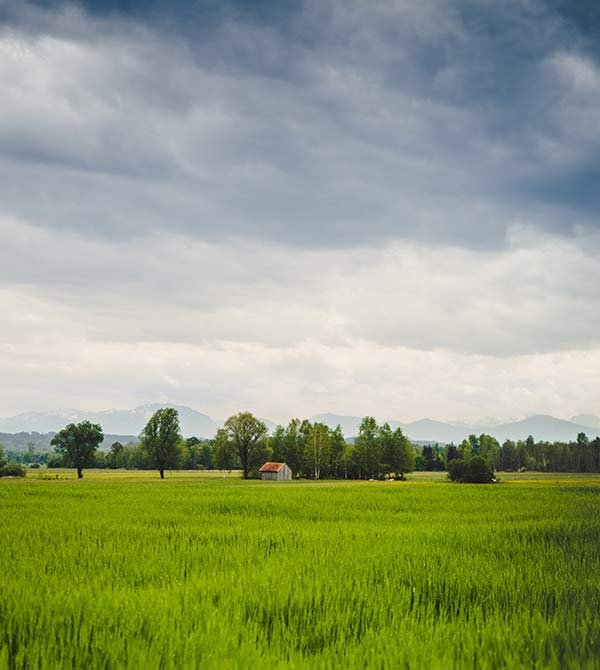Montbeliarde
- Temperature:90°F (32°C)
- Milk:16,500-17,600 pounds per lactation
- Food:Forage, Concentrates, Minerals
- Pregnancy:283 days
- Nationality:France

General Information
Montbeliarde is a breed of cattle that is known for its high milk production, hardiness, and adaptability to a wide range of environmental conditions. They were originally developed in the Jura Mountains of eastern France and were used for both milk and beef production. The breed is named after the region of Montbéliard, which is located in the Franche-Comté region of France.
Montbeliarde cows are medium to large in size and are typically reddish-brown in color with white markings on the head, legs, and tail. They have a distinctive, short and curved horns, and a strong, muscular body.
Montbeliarde cows are known for their high milk production, with an average yield of around 7,500-8,000 kg (16,500-17,600 pounds) per lactation. They are also valued for their good quality milk, which contains high levels of protein and fat. The breed is often used in the production of cheese, such as Comté and Beaufort, which are traditional French cheeses.
Where we find this cow to buy?
Montbeliarde cattle can be purchased from a variety of sources, including breeders, livestock auctions, and online marketplaces.
One way to find Montbeliarde breeders in your area is to search online for Montbeliarde breed associations or registries. For example, in the United States, the American Montbeliarde Association is a registry for Montbeliarde cattle, and their website includes a directory of members who are breeders of Montbeliarde cattle.
Another option is to attend livestock auctions or exhibitions, where Montbeliarde cattle may be sold. It is also possible to find Montbeliarde cattle for sale through online marketplaces that specialize in livestock, such as CattleRange.com, LivestockOfAmerica.com, or DairyDealer.com.
When purchasing Montbeliarde cattle, it is important to work with a reputable breeder or seller who can provide documentation of the animal’s pedigree, health status, and other important information.
It is also important to consider factors such as transportation, housing, and other expenses associated with raising and caring for the animal.

How to increase milk production in Montbeliarde
There are several ways to increase milk production in Montbeliarde cows. Here are some general strategies that may help improve milk production:
01
Providing Montbeliarde cows with a well-balanced diet that meets their nutritional needs is key to maximizing milk production. This includes providing adequate levels of energy.
02
Selecting cows with desirable traits for milk production, such as high milk yield and good milk quality, can help improve overall herd productivity.
03
Establishing and maintaining a consistent milking schedule can help stimulate milk production and prevent the buildup of milk in the udder, which can lead to reduced milk production.
04
Ensuring that milking is done correctly and with proper equipment is important for maximizing milk production.
Medicine
There are several types of medicine that may be used to treat health issues in Montbeliarde cattle, but it is important to work with a veterinarian to determine the appropriate treatment for each specific situation. Here are some common types of medicine that may be used for Montbeliarde cattle:
01
AntibioticsAntibiotics are often used to treat bacterial infections in cattle, such as mastitis or respiratory infections.
02
ParasiticidesParasiticides are medications used to treat and prevent parasitic infections, such as internal and external parasites.
03
Anti-inflammatory drugsAnti-inflammatory drugs can reduce pain and inflammation caused by arthritis or respiratory infections.
04
HormonesHormones can be used to induce or synchronize estrus in cows or stimulate milk production.
Pregnancy
It is important to provide pregnant Montbeliarde cows with a well-balanced diet that meets their nutritional needs. This includes adequate levels of energy, protein.
Preparations should be made for calving, such as providing a clean, dry and comfortable place for birth, and providing necessary equipment and supplies.
Regular monitoring of the pregnant cow’s weight, body condition score, and general health can help ensure that any issues or complications are identified and addressed in a timely manner.
Pregnant Montbeliarde cows should be vaccinated according to a veterinarian’s recommendations to prevent diseases that can affect the health of the cow and calf.
Important!
Proper care and management during pregnancy can help ensure the health of both the Montbeliarde cow and her calf.
Food
Montbeliarde cows, like all dairy cows, require a balanced diet to support their high milk production. Here are some common types of food that are fed to Montbeliarde cows:
Montbeliarde cows require a balanced mix of minerals, including calcium, phosphorus, and potassium, which can be provided through mineral supplements or mineral blocks.
In addition to forage, Montbeliarde cows also require concentrated sources of energy and protein, such as grains, oilseed meals, and byproducts from the food industry.
Montbeliarde cows need a diet that is high in fiber, so forage such as hay, silage, and pasture grasses are important components of their diet.
Access to clean, fresh water is essential for Montbeliarde cows to maintain good health and high milk production.
Facts
Here are some facts about the Montbeliarde breed:
Montbeliarde cattle are well-suited to a variety of environments, including mountainous regions and hot or humid climates. They are known for their hardiness and adaptability to harsh conditions.
Montbeliarde cattle are typically red and white in color, with a medium-sized frame and muscular build. They have short, curved horns and are known for their hardiness and adaptability to a variety of climates.
Montbeliarde cows are known for their high milk production, with average yields ranging from 7,000 to 10,000 kg per lactation. The milk is of good quality, with high levels of protein and fat.
Montbeliarde cattle originated in France as a dual-purpose breed for milk and meat production.
This cattle are known for their fertility, longevity, and disease resistance, as well as their excellent udder health.
Montbeliarde cattle are known for their high-quality meat, which is often used in gourmet cooking.